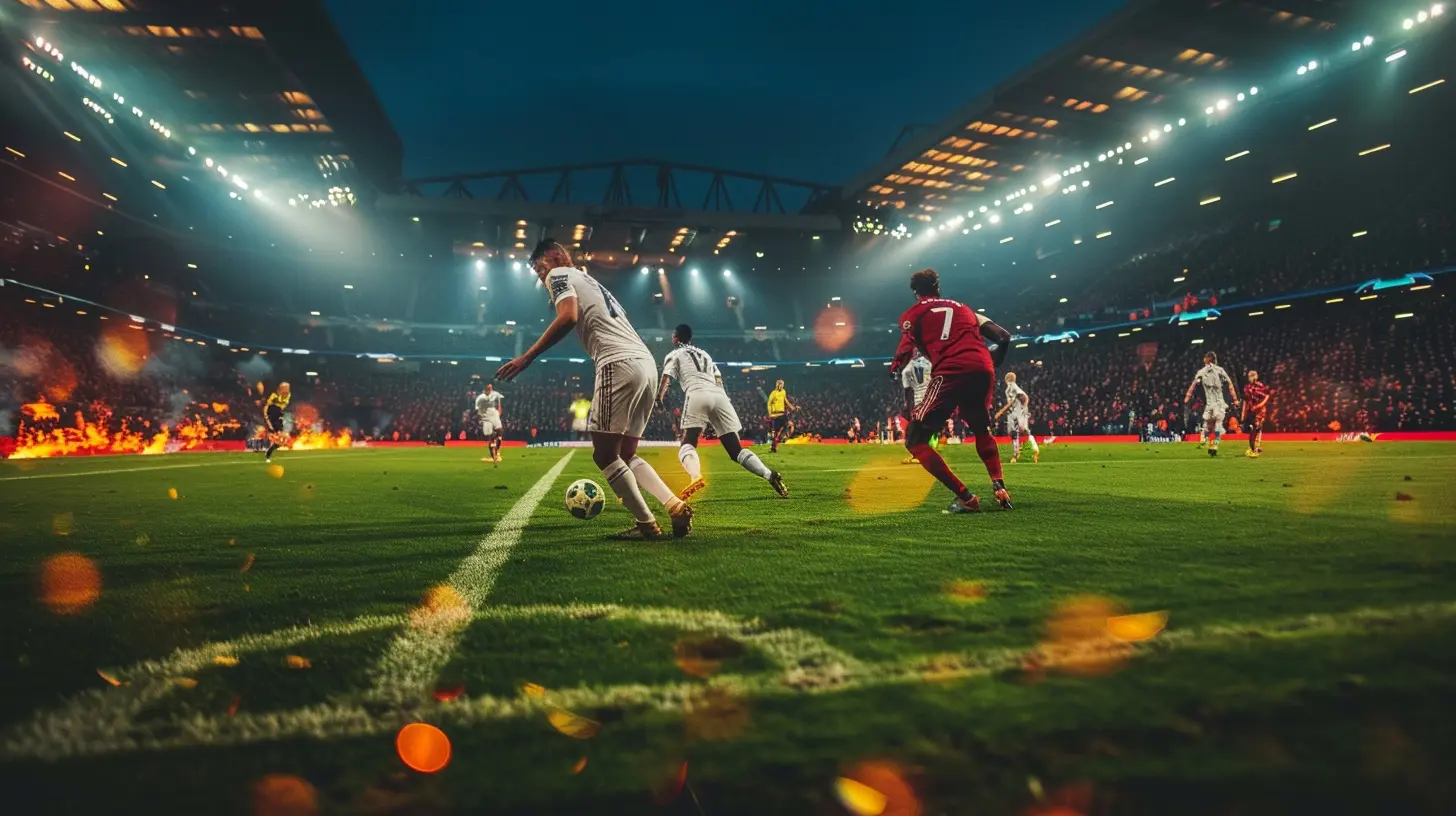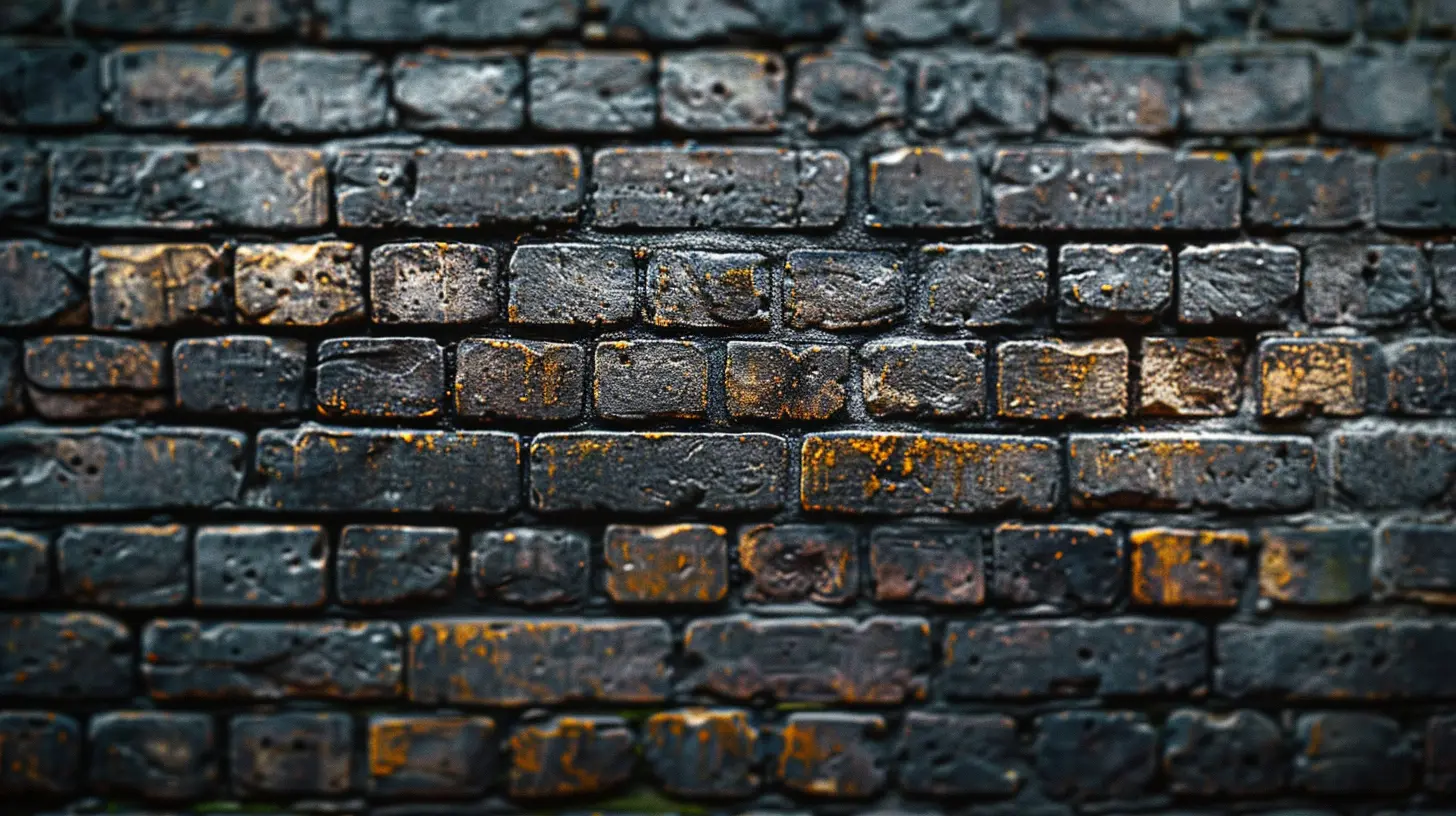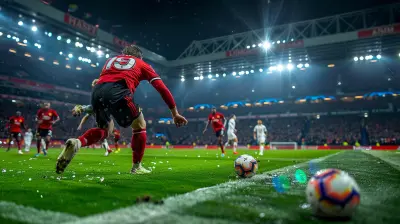Defensive Walls: How a Backlines Resilience Saved the Day
24 July 2025
In the world of sports, especially soccer, it's easy to get caught up in the dazzling goals, the finesse of midfielders, or the rapid counters from wingers. But there's a secret weapon that often goes unnoticed — the defensive backline. These unsung heroes are the backbone of any team, the last line of defense that stands tall when everything else falls apart.
When we think about a team’s resilience, we often picture the goalkeeper making that last-minute save or a striker scoring a crucial goal. But what about the defenders? They're the ones who consistently put their bodies on the line, block shots, and execute tactical plays that can shift the momentum of a game. In this article, we’re going to break down how a defensive backline’s resilience can literally save the day.

What is a Defensive Backline?
Before we dive into how they save games, let's break down what a defensive backline even is. The backline is made up of defenders, typically four or five players, who are positioned closest to their own goal. Their primary job? Stop the opposing team from scoring. Simple, right? Well, not exactly.The backline includes center-backs, full-backs, and sometimes wing-backs depending on the formation. Each of these positions has a specific role, but their overall goal remains the same: protect the goal and maintain the team’s defensive structure.
Center-Backs: The Heart of the Defense
The center-backs are smack dab in the middle of it all. They’re the ones who usually handle the opposition’s striker, clearing crosses, and intercepting passes. Their presence is crucial in organizing the defense. Think of them as the quarterbacks of the backline, constantly communicating with teammates and ensuring everyone stays in position.Full-Backs: The Versatile Workhorses
Full-backs are stationed on the left and right sides of the defense. These players have a unique dual role: they need to defend against wingers, but they’re also expected to push up the field and support the attack. The modern game demands that full-backs be as comfortable passing the ball as they are making tackles. They are often the most versatile players on the pitch, balancing defensive duties with offensive contributions.Wing-Backs: The Tactical Chess Pieces
In certain formations, wing-backs replace traditional full-backs. These players are given more freedom to push forward, providing width in attack while still maintaining defensive responsibilities. Their stamina and agility make them a constant threat, but their defensive resilience can also make or break a game.
Why Is a Resilient Defense So Important?
Let’s be real: soccer is a team sport, but even the best offenses can have off days. That’s when a resilient backline becomes indispensable. Whether it’s holding onto a slim 1-0 lead or grinding out a draw, a strong defense can turn the tide of a match.Imagine this: You're watching a high-stakes game, and it's the 88th minute. The opposition is throwing everything they've got at your team, launching crosses, taking shots from distance, and playing with desperation. All it takes is one mistake from a defender for them to score. But a resilient backline doesn’t crack under pressure. They hold their shape, block shots, clear corners, and frustrate the attack until the final whistle blows. Sound familiar? That’s the magic of a solid defense.

How a Backline's Resilience Saved the Day: A Case Study
To really understand how a resilient backline changes the course of a game, let’s look at a real-world example. Think back to the 2010 World Cup final between Spain and the Netherlands. Spain’s possession-based style was dominant, but the Dutch had their chances. Yet, every time the Netherlands looked like they might break through, Spain's backline, spearheaded by the legendary Carles Puyol, was there to stop them.In particular, during the extra time, the Dutch had a golden opportunity when Arjen Robben was played through on goal. But instead of panicking, Spain’s defenders closed down the space, forced Robben into a more difficult angle, and ultimately stifled the attack. That defensive resilience kept Spain in the game long enough for Andrés Iniesta to score the winning goal in the 116th minute.
Without the grit and determination of Spain’s backline, that game could have easily gone the other way. It’s moments like these that truly showcase how a stout defense can be the difference between triumph and heartbreak.

Key Traits of a Resilient Backline
So, what makes a backline resilient? It’s not just about having big, strong players who can win headers. Sure, physicality helps, but there’s so much more that goes into it. Below are some of the key traits that define a resilient defense:1. Communication
You could have the best individual defenders in the world, but if they're not talking to each other, it's game over. Communication is the glue that holds a defense together. Center-backs need to constantly be barking orders, making sure full-backs are in position and alerting teammates of potential threats.2. Positioning
A well-positioned defender can make the game look easy. Instead of relying on last-ditch tackles, good defenders read the game and put themselves in the right spot ahead of time. It’s all about anticipation. If you can cut off a pass or close down space before the ball even arrives, you’re already one step ahead of the attacker.3. Tactical Discipline
Ever see a defender dive into a tackle and immediately regret it? Yeah, that’s a lack of discipline. A resilient backline doesn’t just throw themselves at the ball recklessly. They stay composed, maintain their shape, and wait for the right moment to make a move. It’s like playing chess — sometimes, the best move is no move at all.4. Physical Endurance
There’s no sugarcoating it — defending is exhausting. Between sprinting back to cover, jumping for headers, and battling for possession, defenders have a lot on their plate. A resilient backline needs players with the endurance to keep up that level of intensity for the full 90 minutes (and then some if it goes to extra time).5. Mental Toughness
This might be the most important trait of all. Defenders have to be able to shake off mistakes and keep going. If you let one slip-up get to you, it’s game over. The best backlines have short memories — they focus on the next play and never let the pressure break them.The Impact of Defensive Resilience on the Entire Team
Here’s the thing: a strong backline doesn’t just benefit the defense. It has a ripple effect that impacts the entire team. When the defense is solid, the midfield can push forward with more confidence, knowing that they have cover behind them. The attackers, too, can take more risks, knowing they don’t always have to track back.Think of a resilient backline as the foundation of a house. Without it, everything crumbles. With it, the entire structure stands strong.
Consider Liverpool under Jürgen Klopp. When they signed Virgil van Dijk, their defense transformed. His presence not only shored up their backline but allowed players like Trent Alexander-Arnold and Andy Robertson to bomb forward, adding an extra dimension to their attack. Van Dijk’s leadership at the back was the catalyst for Liverpool’s eventual Premier League and Champions League success.
Defensive Resilience in Other Sports
While we’ve focused heavily on soccer, the concept of a resilient defense transcends the sport. Whether it’s a football team’s secondary or a basketball team’s ability to defend the paint, the idea remains the same. Defense wins championships.In basketball, for example, the Golden State Warriors’ dynasty was built on more than just their three-point shooting prowess. Players like Draymond Green and Andre Iguodala were the defensive linchpins, capable of shutting down the opposition’s best players. Their ability to switch, cover ground, and force tough shots was just as important as Stephen Curry’s shooting from beyond the arc.
In American football, the 2015 Denver Broncos famously rode their defense, led by Von Miller, to a Super Bowl victory. Their offense was pedestrian, but their defense was unbreakable. Time and time again, they came up with clutch plays to keep the game within reach until their offense could do just enough to win.
Wrapping It Up: The Unsung Heroes
At the end of the day, it’s easy to overlook the role of the backline. They don’t get the same glory as the goal scorers, and they rarely make headlines. But without them, teams don’t win. A resilient backline is the foundation upon which everything else is built. They’re the ones holding down the fort, keeping the opposition at bay, and saving the day when all seems lost.So, the next time you’re watching a high-stakes game, take a moment to appreciate the defenders. Notice how they communicate, how they position themselves, and how they stay composed under pressure. Because when the final whistle blows, it’s often their resilience that made all the difference.
all images in this post were generated using AI tools
Category:
Game AnalysisAuthor:

Frankie Bailey
Discussion
rate this article
1 comments
Calyx Hahn
Great read! The importance of a solid defensive line can't be overstated. This article highlights how a team's resilience at the back can turn the tide of a match. Kudos to the defense for providing the foundation for victory—proof that a strong backline is essential for success!
August 20, 2025 at 3:05 AM

Frankie Bailey
Thank you! I'm glad you enjoyed the article and appreciate the recognition of the defense's crucial role in a team's success.


